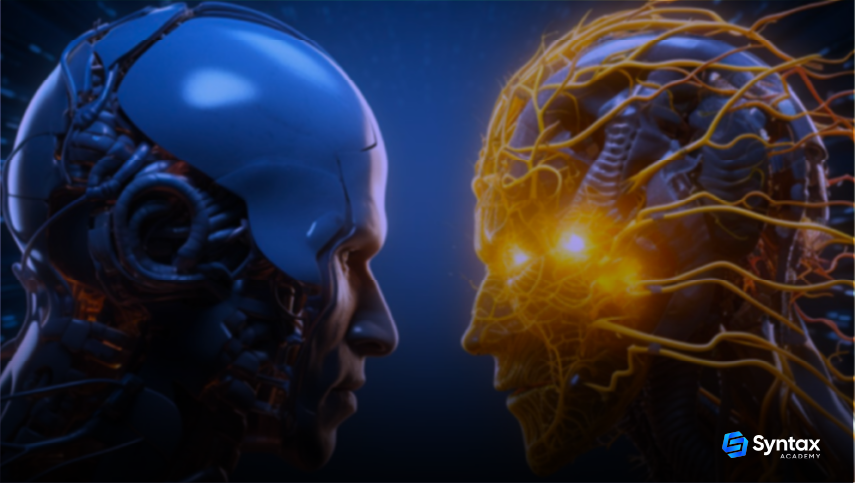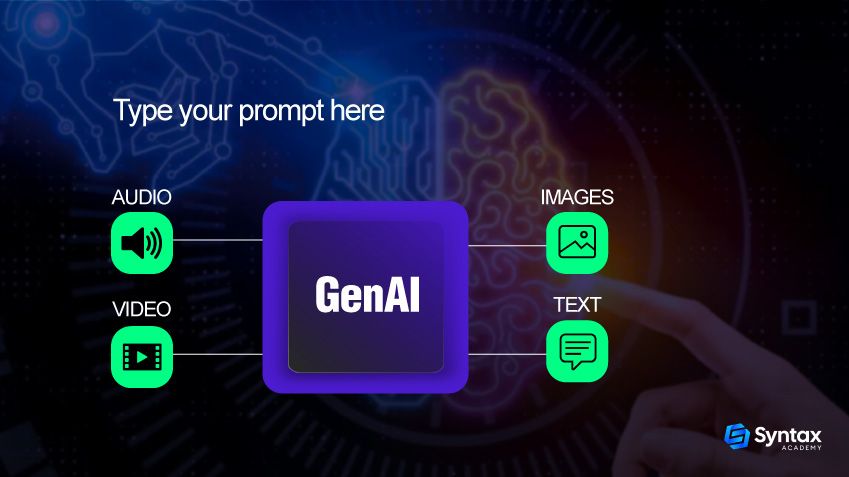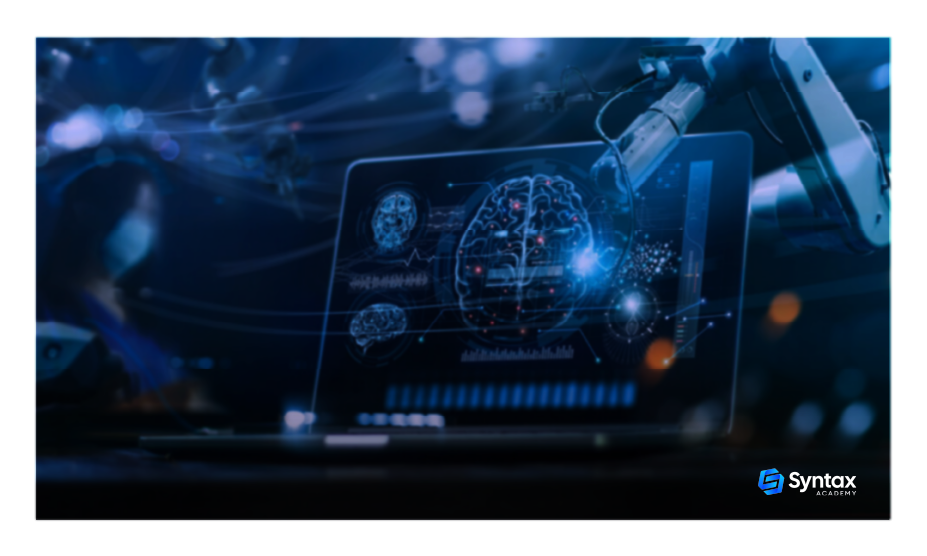Traditional AI vs. Generative AI: Understanding the Contrast

Curious about how computers create art, stories, or music? It's pretty amazing, right? Well, let me introduce you to two different types of computer smarts: Traditional AI and Generative AI. They're like two superheroes with their own special powers. Get ready to dive into the world of Traditional AI vs. Generative AI – it's going to be an exciting ride! In this blog, we'll explore the differences between these two types of AI and discover what makes each of them unique.
Table of Contents
-
1. Traditional AI
-
2. Generative AI
-
3. Traditional AI vs. Generative AI
-
4. Tabular Comparison: Generative AI vs. Traditional AI
-
5. Conclusion
1. Traditional AI

2. Generative AI

3. Traditional AI vs. Generative AI: What's the Difference?
Let’s talk about how these two work their magic.
- Traditional AI:
- Traditional AI learns through a rule-based approach, meaning it needs explicit instructions for every single step. These instructions are designed by human experts who know the problem inside out. The AI follows these rules to make decisions and solve problems.
- Generative AI:
- Instead of sticking to rules, Generative AI learns patterns and structures from huge amounts of data. There’s no need for someone to hand it a set of rules; it figures things out on its own by understanding the data deeply.
Next up, let’s see how they learn.
- Traditional AI:
- This one usually needs a teacher. It often relies on supervised learning, where it’s trained using labeled data. Traditional AI learns by matching the input to the correct output based on these examples.
- Generative AI:
- Generative AI can learn with or without a teacher. It shines in unsupervised learning, where it’s given data without any labels. This ability to find patterns without needing someone to guide it makes Generative AI quite powerful.
Now, what do they actually do with what they’ve learned?
- Traditional AI:
- Traditional AI is all about categorizing. It learns to distinguish between different categories, such as classifying images of cats and dogs. The goal is to correctly label things based on the rules it’s learned.
- Generative AI:
- Generative AI doesn’t just sort – it creates. Generative AI learns the underlying patterns in data and then generates new content that looks and feels like the original. Think of those amazing AI-generated artworks or even entirely new music tracks – that’s Generative AI in action.
- Traditional AI:
- Traditional AI is goal-oriented and focused on specific tasks. However, it’s not really creative – it follows the rules and doesn’t venture outside of what it’s been programmed to do. It’s excellent for solving problems but doesn’t come up with new ideas on its own.
- Generative AI:
- Generative AI is the creative type. Because it can generate novel content, it’s incredibly adaptable and creative. Whether it’s crafting a new piece of music, painting a picture, or even writing a story, Generative AI can produce diverse outputs that align with different patterns or changes in the data.
4. Tabular Comparison: Generative AI vs. Traditional AI
| Aspect | Traditional AI | Generative AI |
| Approach | Relies on rule-based approaches | Adopts a data-driven approach |
| Implementation | Human-designed rules | Machine learning techniques like deep neural networks |
| Operation | Follows predefined rules to make decisions | Learns from data to generate new content |
| Learning Type | Often employs supervised learning | Can use both supervised and unsupervised learning, excelling in unsupervised scenarios |
| Training Data | Relies on labeled data | Trained on unlabeled data in unsupervised learning |
| Outcome | Maps inputs to specific outputs based on labeled examples | Generates new data and content, particularly powerful in unsupervised settings |
| Model Type | Typically employs discriminative models | Utilizes generative models |
| Purpose | Learns to distinguish between different classes or categories of data | Learns the underlying probability distribution of data |
| Example | Image classification based on features | Generative Adversarial Networks (GANs) creating realistic images |
| Traits | Designed for specific tasks, lacking creativity and adaptability beyond programming | Exhibits creativity and adaptability due to its capacity to generate novel content |
| Mode of Working | Follows predefined rules without the ability to generate new content or adapt to new situations autonomously | Can create diverse outputs such as images, texts, and music, adapting to different data distributions |
5. Conclusion
So, there you have it – a peek into the world of Traditional AI vs. Generative AI. Traditional AI is like the straight-A student who excels at following instructions and solving specific problems, while Generative AI is the creative genius who’s always coming up with something new.
If you’re intrigued by the creative potential of Generative AI, why not dive deeper? Check out the Generative AI courses at Syntax Academy. With hands-on learning and expert guidance, you’ll be well on your way to mastering this exciting field, unlocking endless possibilities in technology and beyond.

Share with your community!
Related Article

Generative AI
Exploring Generative AI vs. Predictive AI: What Sets Them Apart?
By: Martha James
Ever wonder how computers can create art or predict the future? It's all thanks to two genius types of Artificial Intelligence: Generative AI and Predictive AI. They're like the creative wizards and fortune-tellers of the digital world. So, let's dive into their world of wonder! In this blog, we'll unravel the mysteries behind these two AI domains and explore what makes them tick.
Read More

Generative AI
Future-Proofing Your Career: Thriving in the Age of Generative AI
By: Martha James
Have you ever wondered what the future holds for work? With all this talk about AI and robots taking over, it's easy to get a little freaked out. But fear not! Today, we're going to dive into the world of Generative AI, what it means for the future of work, and how we can get ready for it.
Read More

Generative AI
The GenAI Revolution: Transforming E-Commerce
By: Martha James
Have you ever wondered how those recommended products magically appear on your favourite online store? Well, it's not magic—it's GenAI! In this blog, we're diving into the impact of Generative AI (GenAI) on Ecommerce. Let's explore how GenAI is reshaping the way we shop online.
Read More
Professionals from Industry Pioneers Choose
Syntax Academy for Skill Mastery
